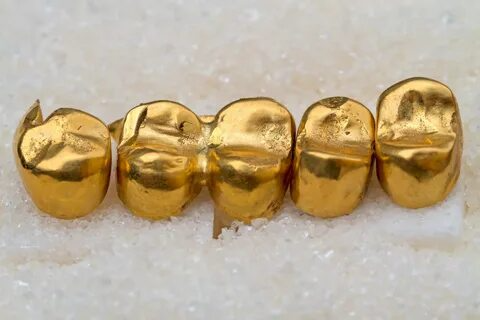Gold Crowns are a type of dental restoration that are made from a gold alloy and are widely known for their strength, durability, and biocompatibility. Gold crowns are often used for restorative purposes, particularly for posterior teeth (molars and premolars), where functionality and strength are more important than aesthetics. While they may not be as aesthetic as porcelain or composite crowns, they have been a trusted option for dental restoration for over a century.
Advantages of Gold Crowns
- Durability and Longevity:
- Gold crowns are incredibly durable and can last 20 years or more with proper care. They are resistant to wear, cracking, or breaking under normal biting forces, making them ideal for posterior teeth where the forces are strongest.
- Biocompatibility:
- Gold is highly biocompatible, meaning it is unlikely to cause allergic reactions or irritation to the gums or surrounding tissues. This makes it an excellent choice for patients with sensitivities to other materials.
Disadvantages of Gold Crowns
- Aesthetics:
- Gold crowns are not as aesthetically pleasing as porcelain or composite crowns, especially for patients who want a restoration that blends seamlessly with their natural teeth.
- Cost:
- Gold crowns can be more expensive than other types of crowns, such as porcelain or composite, due to the cost of the materials and the specialized process required to fabricate the crown.
Process of Fabrication
- Tooth Preparation:
- The dentist begins by preparing the tooth to ensure there is enough space for the gold crown. This may involve removing some of the tooth structure to accommodate the thickness of the crown.
- Impression:
- Once the tooth is shaped, an impression is taken of the prepared tooth. This can be done using traditional impression materials or digital scanning technology.
- Crown Design:
- The impression is sent to a dental laboratory, where the gold crown is fabricated. A skilled dental technician will create a custom-fit crown, ensuring it matches the shape, size, and bite of the natural tooth.
- Fitting and Adjustment:
- Once the gold crown is ready, the dentist will place it over the tooth and check for proper fit, bite, and comfort. Adjustments will be made as necessary.
- Cementation:
- After the final fitting, the gold crown is permanently bonded to the tooth using a strong dental cement.
Care and Maintenance
- Avoid Hard Foods:
- While gold crowns are durable, it’s still advisable to avoid biting down on extremely hard objects (like ice or hard candies) to prevent damage to the crown or surrounding teeth.
- Routine Check-ups:
- Regular dental visits are essential to ensure the gold crown remains intact and to monitor for any potential issues such as decay or wear.
Conclusion
Gold Crowns are an excellent choice for patients seeking durability, strength, and biocompatibility, especially for posterior teeth that are subject to high chewing forces. While not as aesthetically pleasing as porcelain or zirconia crowns, their longevity, minimal wear on opposing teeth, and precise fit make them a reliable solution for long-lasting dental restorations. They remain a top choice for patients prioritizing function and durability over aesthetics, and for those who require a restoration with proven strength and a good track record.


